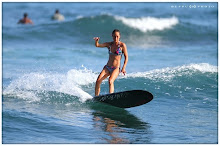On
Wednesday, February, 6, 2013, Roxy, Claire, and I had the opportunity to attend
the Performance and Development workshop on "How to Lead & Communicate
Change" with Alt Kagesa. He shared his mana'o with accepting change,
effective ways to lead change, and inspired us to be champions of change.
Rather than submitting our own responses, we gathered our thoughts and brought them together in a single blog. We had many takeaways, but decided to keep it practical by sharing some inspiring quotes and strategies that you can use when you are up for
catching the wave of change in all facets of your life.
The four areas to consider when Leading and Communicating Change:
- Recognize the "Obstacles of Change." Charles Darwin once said, "It's not the strongest that survive, nor the most intelligent, but the one most responsive to change." In Claire's recent past, she dealt with so many changes in her life, like moving to Hawaii, getting married, getting a new job and losing her dad. It was difficult coping and handling all of the change. Now that she reflects and thinks back, she always remembers what her Dad would tell her, "Change is the only constant thing in life." And she thanks her Dad and Mom for instilling her responsiveness to change. Although things are difficult or sometimes you want to give up, it is your flexibility, openness and knowing that good things will come out of whatever change you are going through.
- Create a "Case for Change." Alt shared a great story with us about a millionaire who had pet crocodiles. He loved having guest over to show off his pool of crocodiles. He found it amusing to toss live chickens in and watch these massive predators demolish and scarf them down as the chickens would squeal to death. One time, his guest were watching in amazement when the millionaire turned to them and said, "I'll give anyone who jumps in and swims across the pool a million dollars." All of a sudden there was a splash. A young man swam across as quickly as he could, jumped out, and then turned to his friend and said... "hey, why did you push me in?" Moral of the story? "With a big enough why, one can accomplish any how."
- "Leverage Leadership Support."Alt was good about sharing stories that we could all relate to as employees of Kamehameha Schools. Roxy especially enjoyed the story he told about a time he had to lead a group of people here at KS when there were system-wide cutbacks that required the department to be shut down. As a result, all of the staff for that department knew that they were going to be laid off in the foreseeable future. It was definitely not a positive change, and there was a lot of fear. To support his team through the journey, Alt had weekly staff meetings to discuss how they were feeling and what was going on in their process. This was his way of continuing to be there for the staff as much as possible even though there was an inevitable change coming up. It was much appreciated to hear his story because it emphasized an effective way to continue to be there for the team. He mentioned often, that if there's nothing to talk about, people assume the worst. So he would have meetings even if there was nothing to talk about. Through his story, he shared his mana'o, which is to, "Never turn your back on the ocean during waves of change."
- "Communicating Change." During times of change quality communication is compelling, concise, and consistent. Alt shared a strategy for accomplishing this standard of communication, which is the 10X4 communication plan. Change that is not shared 10 x's 4 different ways will be misunderstood. In some cases, it could be the same message, but in different ways.
- One on one with opinion leaders
- FAQ document (no more than 2 pages)
- E-mail follow-up by snail mail
- Large group sharing followed by small group discussions
- Webpage
- Consistent and frequent update
We are all very thankful that we were able to attend this workshop and share what we gained from it. If you have any questions or would like to wala'au (talk story) about more details please don't hesitate to email us by clicking on our names below.
Malama Pono,

Comments